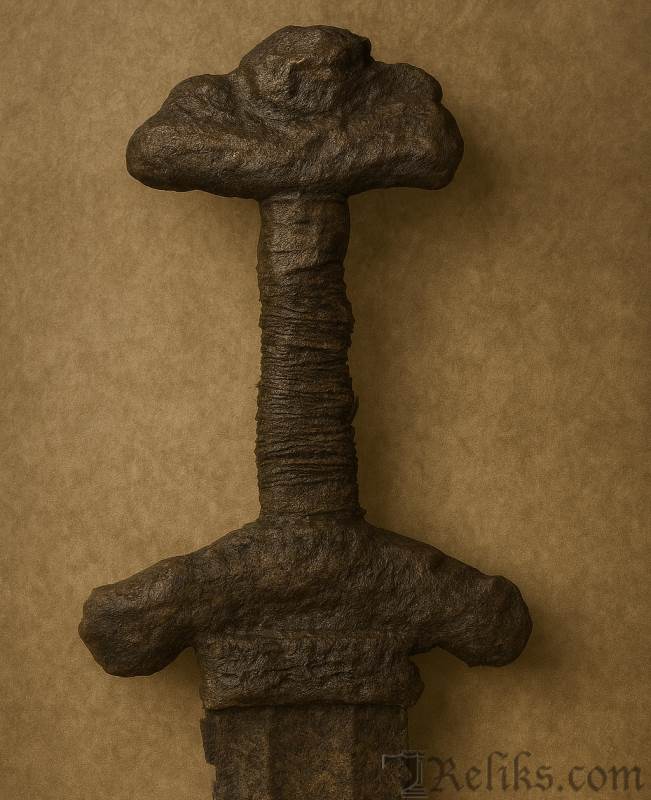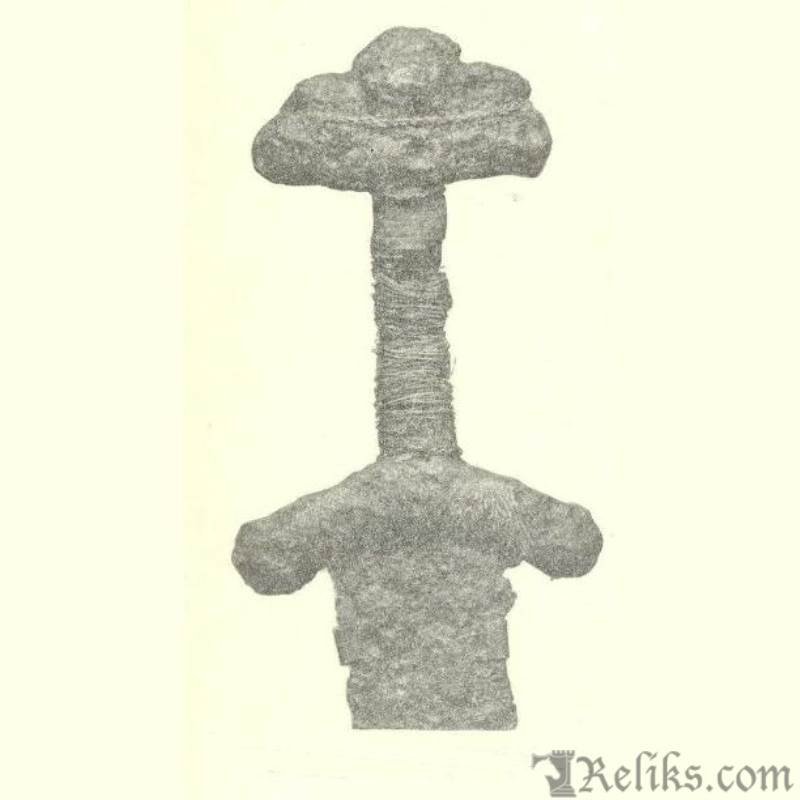Viking Sword Type Z – The Last Curved-Guard Hilts of the Viking Age
A Transitional Form at the Edge of Two Eras
Type Z represents one of the closing chapters of Viking sword design. Its curved guards and three-lobed pommel still echo the grandeur of earlier R and S types, yet the details already anticipate the plainer, sturdier forms of the medieval knightly sword. Emerging in the late 10th century, these weapons capture the tension of a society moving from pagan warrior traditions toward Christian and continental ideals.
Archaeological Description

Viking Sword Type Z – The Last Curved-Guard Hilts
The guards of Type Z are broad and strongly curved, tapering to a pointed cross-section that feels more substantial than the flattened L-type. Above them sits a three-lobed pommel with a swollen central lobe, often thicker and taller than the side lobes—closely recalling the silhouette of Type S. While most examples are plain iron, some reveal remarkable craftsmanship. One sword from Løken, Hole (C 5402) bore silver wire inlays running between pommel and guard and wrapped around the grip in decorative bands, a flourish sometimes called vettrim. Another (C 25, Hovindsholm) had the tang itself wrapped in silver wire, a detail rarely seen on Viking swords.
In several cases, the upper guard features a downward tang-pin—an innovation that firmly links the construction of these swords to continental medieval practice. This trait alone makes Z an important marker of transition.
Distribution & Numbers

Petersen (fig.136)
Only eight to nine Norwegian examples are firmly assigned to Type Z. Key finds include:
- Hovindsholm (Nes, Hedmark) – C 25, with silver-wrapped tang.
- Løken (Hole, Buskerud) – C 5402, with ornamental silver wire.
- Hafsten (Gransherred, Telemark) – C 5544, linked with late grave goods.
- Indre Henden (Gloppen, Nordfjord) – B 4732, a West Norwegian outlier.
Beyond Norway, Type Z is attested in Finland, the eastern Baltic, and Russia, while a lone example surfaced in the River Thames—evidence of its wide reach at the end of the Viking Age.
Dating & Cultural Context
The archaeological context anchors Type Z securely to the late 10th and early 11th centuries. Graves with these swords often include K-, L-, and M-type axes, slender high-ridged spearheads, and younger shield bosses. A particularly telling example is the Hafsten find, where the skeleton lay with the head toward the west—a Christian burial custom.
Type Z is not just a typological link between R/S and the first medieval styles; it is also a cultural one. Its presence in both pagan-style weapon graves and Christian contexts shows the overlap of traditions during Norway’s conversion era. The swords themselves were still proudly Viking in outline, yet their fittings and construction reveal the growing influence of continental Europe.
Closing Reflection
Type Z swords are more than just weapons—they are symbols of transition. Their curved guards and tripartite pommels root them firmly in Viking tradition, while silver wire ornament, tang-pins, and simplified construction point toward the high medieval swords that would soon dominate Europe. To hold a Type Z is to stand at the threshold of two worlds: the waning age of Viking raiders and the rising order of Christian kingdoms. In this way, they embody both the last flourish of Norse craftsmanship and the first steps into the medieval age.
Core classification based on Jan Petersen, De Norske Vikingesverd (1919). Additional commentary by Reliks.com.